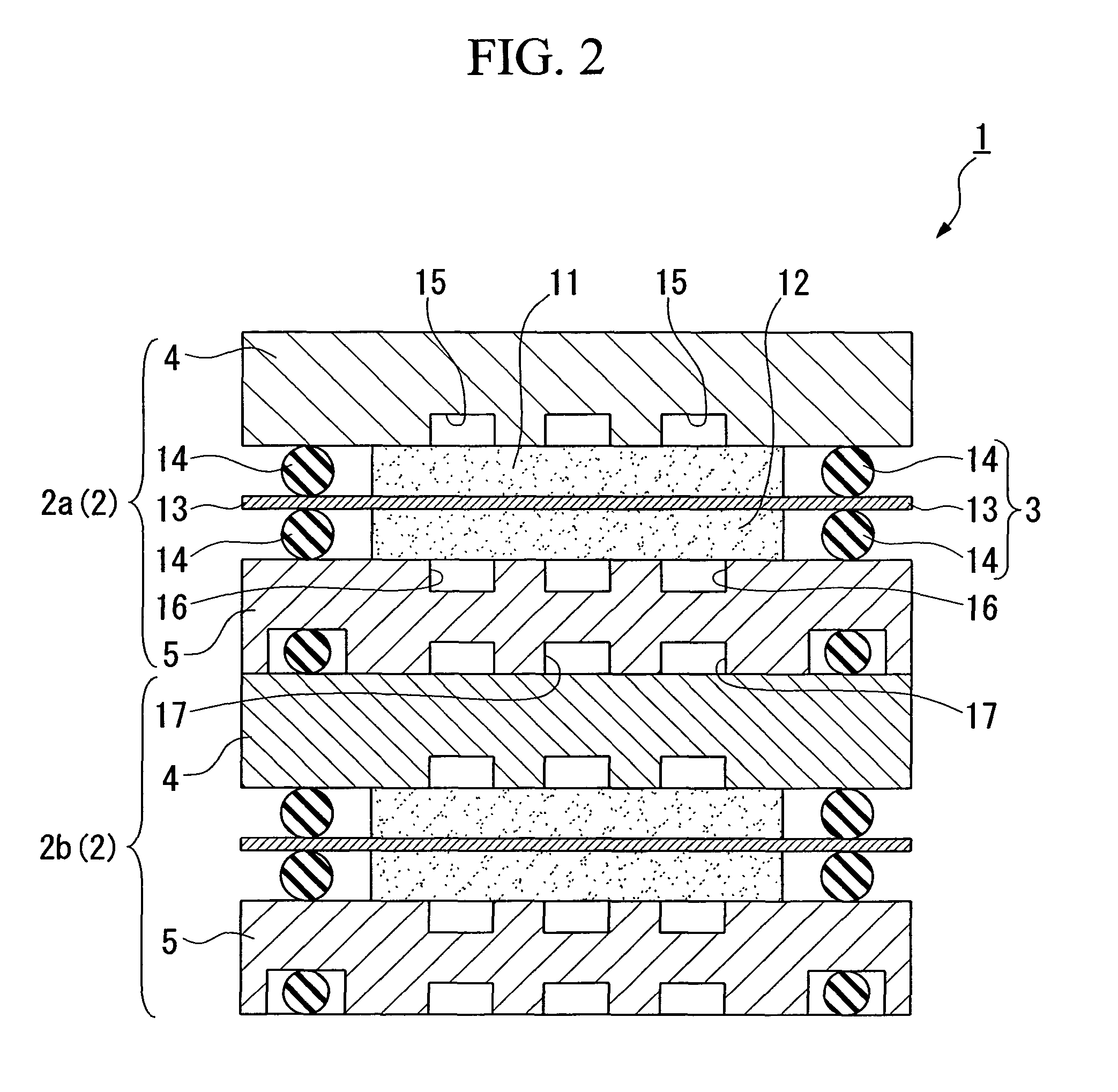Connecting structure to cell of voltage detecting connector and fuel cell
a technology of voltage detection and connecting structure, which is applied in the direction of fuel cells, cell components, fuel cell groupings, etc., can solve the problems of inability to detect the cell voltage of the end cell, the terminal is not moveable, and the difficulty of obtaining electric power sufficient to drive an automobile, etc., to achieve the reduction of the number of terminals, the effect of maintaining the necessary detecting accuracy and reducing the increase of weight and cos
- Summary
- Abstract
- Description
- Claims
- Application Information
AI Technical Summary
Benefits of technology
Problems solved by technology
Method used
Image
Examples
Embodiment Construction
[0044]Hereinafter, the connecting structure to a cell of the voltage detecting connector and fuel cell in one preferred embodiment of the present invention will be explained with reference to drawings.
[0045]FIG. 1 is a sectional view of the principal part of a cell connecting apparatus equipped with a fuel cell and a voltage detecting connector connected to the fuel cell in one preferred embodiment of the present invention. As shown in this figure, a fuel cell 1 is constituted from a plurality of cells 2 which are stacked in a predetermined numbers (in this case, n). Each cell 2 is constituted by sandwiching a membrane electrode structure 3 with separators 4 and 5.
[0046]The fuel cell 1 in this embodiment is equipped with first cells 2a (2) in which terminals 6 and 7 for measuring voltage are disposed on separators 4 on anode electrode 11 sides (refer to FIG. 2) and separators 5 on cathode electrode 12 sides (refer to FIG. 2) respectively, and second cells 2b (2) which have terminals...
PUM
| Property | Measurement | Unit |
|---|---|---|
| voltage | aaaaa | aaaaa |
| electrical voltage | aaaaa | aaaaa |
| electric power | aaaaa | aaaaa |
Abstract
Description
Claims
Application Information
 Login to View More
Login to View More - R&D
- Intellectual Property
- Life Sciences
- Materials
- Tech Scout
- Unparalleled Data Quality
- Higher Quality Content
- 60% Fewer Hallucinations
Browse by: Latest US Patents, China's latest patents, Technical Efficacy Thesaurus, Application Domain, Technology Topic, Popular Technical Reports.
© 2025 PatSnap. All rights reserved.Legal|Privacy policy|Modern Slavery Act Transparency Statement|Sitemap|About US| Contact US: help@patsnap.com



